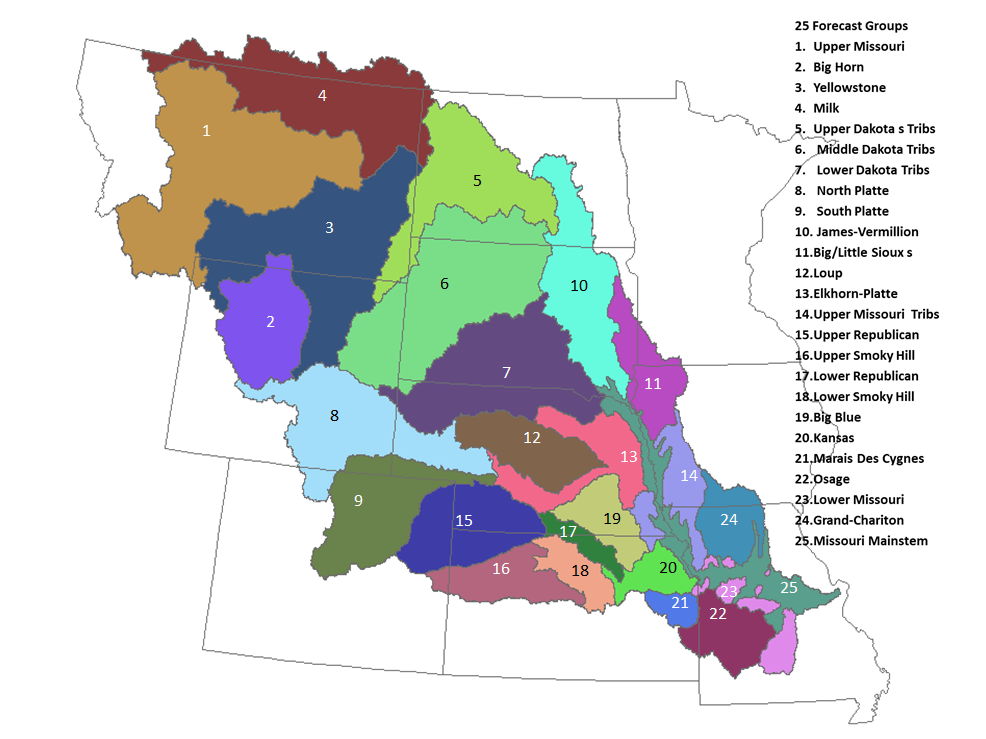What uncertainty information is provided?
|
For every forecast point that has a current forecast available, there are three pieces of information provided. These are: 1) a hydrograph plot showing the forecast with uncertainty bands, 2) a table summarizing the long-term forecast errors for a 5 day forecast horizon, and 3) a forecast error distribution bar chart. This uncertainty information provides general forecast bias, e.g. forecast quality based on past forecast performance.
In addition, the hydrograph plot includes information on 1) which Weather Forecast Office (WFO) is that provides watch/warning service, 2) the typical response time, and 3) overall forecast bias. The flood categories and Forecast Issuance Stage (FIS) for the forecast point are also shown if within the range of the stage y-axis scale. |
|
| |
What are the uncertainty error bands based on?
|
The uncertainty bands around the current forecast for a given location are based on long-term Mean Absolute Error (MAE) values for all forecasts issued during the period 01/01/2001 thru the latest full calendar year. The exception is, that for year-round and seasonal daily forecast points, only forecast-observed data pairs where one or both values exceeded the Forecast Issuance Stage (FIS) were used in the MAE computation. Thus, for year-round and seasonal daily forecast points, the error bands likely show a wider spread than really exists when the forecasts are well below FIS -- this is a known limitation. In the future these MAEs will be updated yearly, at the end of the water year.
In addition a minimum sample size of 30 forecasts for each time-step was required. For locations where inadequate observed and/or forecast data were available, average MAEs were computed for a location using other locations with similar response times that had adequate data. |
|
|
|
What is forecast point?
|
| A location along a river or stream for which a hydrologic forecast is available. The observed/forecast stage for a given forecast can be assumed to be representative for a given reach of the river. Every forecast point has a defined reach. This reach is a section of river or stream from a location upstream of the forecast point to a location downstream of the same forecast point. |
|
| |
What is response time?
|
|
Every forecast point has a response time assigned based on typical time to crest.
These response time categories are:
- Fast - time to crest typically less than 24 hours
- Medium - time to crest typically between 24 hours and less than 60 hours
- Slow - time to crest typically 60 hours or greater
|
|
| |
What are flood categories?
|
|
For each forecast point severity of flooding is categorized, these categories are:
- Minor - minimal or no property damage, but possibly some public threat (e.g. inundation of roads).
- Moderate - some inundation of structures and roads near stream, evacuations of people and/or transfer of property/farm animals to higher ground.
- Major - extensive inundation of structures and roads, significant evacutions of people and/or property/farm animals to higher ground.
|
|
| |
What is Forecast Issuance Stage (FIS)?
|
| This is the stage which represents when River Forecast Centers (RFCs) begin issuing forecasts for a non-routine forecast point (also known as flood-only or criteria). This stage is coordinated between the WFO and RFC. The needs of WFO/RFC partners and other users are considered in determining this stage. Forecast Issuance Stage may or may not be the same as the WFO Action Stage. |
|
